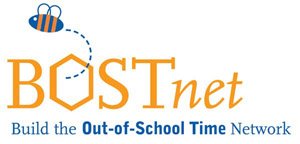This is an exciting time for afterschool and out-of-school time in Boston and across Massachusetts. There is a growing recognition of the role OST plays in supporting and developing children and youth and providing the necessary assets for success in education and in life. The state’s recently convened Special Commission on After School and Out-of-School Time elevated the field, resulting in significant new funding across the state. There is an increasing emphasis on early care and school age quality, support for children and youth with special needs, and services for older youth, from career and college preparation to violence prevention. Increasingly, these programs are finding common ground in a youth development framework that transcends early care, school age, and older youth programs. Moreover, there is a growing awareness of and emphasis on coordinating services to more children in cities such as Boston. There is no longer a question of whether OST programs are necessary; instead, the question has shifted to how do we best develop and support high-quality programs and maintain a diversity of opportunities that serve the multiple needs and interests of children, youth and families.
Despite the positive signs, challenges continue to exist. As a recent report from the Wallace Foundation notes, “defining what a well-functioning, coordinated OST “system” consists of – and how to plan, operate and sustain it – remains very much an early work in progress.” Although there is strong research that tells us what elements are important for a quality program, defining what a quality program looks like and developing an infrastructure to build and support quality programming remains elusive. There is also continued debate on how best to evaluate programs. While youth outcomes remain the standard benchmark for state, federal and private funders, many researchers and advocates in the field are pushing for more quality-based indicators. The thought is that if we evaluate programs on their ability to deliver quality at the point-of-service, we can stop holding them accountable for outcomes that are out of their control. By focusing on quality, we have greater control over the levers of change, including leadership development, staff practices, program culture (risk and innovation) and workforce training systems.
There is also a lack of consensus about what are appropriate expectations for OST. When parents view afterschool as childcare they often utilize it inconsistently in response to periodic need. Moreover, reducing the basic function of afterschool to childcare excludes the role these programs play in healthy youth development. Viewing afterschool as an extension of the school day also limits the potential of the field. Focusing on academic achievement and structuring content in a school-like way can overshadows the unique characteristics of afterschool that make it a valuable learning environment. Regardless of the content a program offers, it will not tap deeper developmental assets in youth if it does not strengthen its assets as a distinct developmental setting. It is also clear that a core asset of OST learning—fun—is often a missing ingredient not readily apparent to program staff. Fun is the foundation of sustained learning and engagement from early childhood onward. Fun is the enjoyment of socialization. Fun is the ability to play with others without the constant proctoring of time that many adults and educators seem to bring. Fun learning matters!
Ultimately, our goal is universal access to quality opportunities that build developmental assets in youth, including confidence, social-competence, positive identity, positive values and a commitment to learning and community. Research shows that children and youth who have a high level of these assets at any given time make better decision, are engaged in their communities, are more resilient, and achieve more academically. For over twenty years, BOSTnet has worked to fulfill its mission to enhance the quality and increase the capacity of the out-of-school time field. While this mission is as important to us today as it has ever been, we know that access to quality programs is not enough. As researchers are finding, positive youth outcomes are most directly related to participation in quality youth environments that are safe, supportive, interactive and engaging. Yet, we have very little data on participation rates or overall demand.
Engagement is the key because it correlates directly to consistent attendance. We often talk about this as dosage, a combination of “intensity” (the number of days and hours a child takes part in a program), and “duration” (the span of time that a child is involved in OST programming). As the recent study by Public/Private Ventures notes, short-term engagement has been shown to result in only short-term outcomes without any long-term impact on youth development. If quality and participation are the key drivers of outcomes, then we must address head on the challenge of creating programming that appeals to children and youth of various ages with diverse interests. This fact reinforces the idea that programs need to focus on what happens at the point of service. Do the programmatic elements reflect what we know about quality OST opportunities? Are children and youth engaged and attending the program on a regular basis? Are children and families returning year after year and building a sense of community and cumulative outcomes over time? Allowing program leaders to focus on these elements frees them from inherently problematic, and often demoralizing, metric-driven outcomes.
Gov. Patrick Establishes Six Readiness Centers
16 years ago
